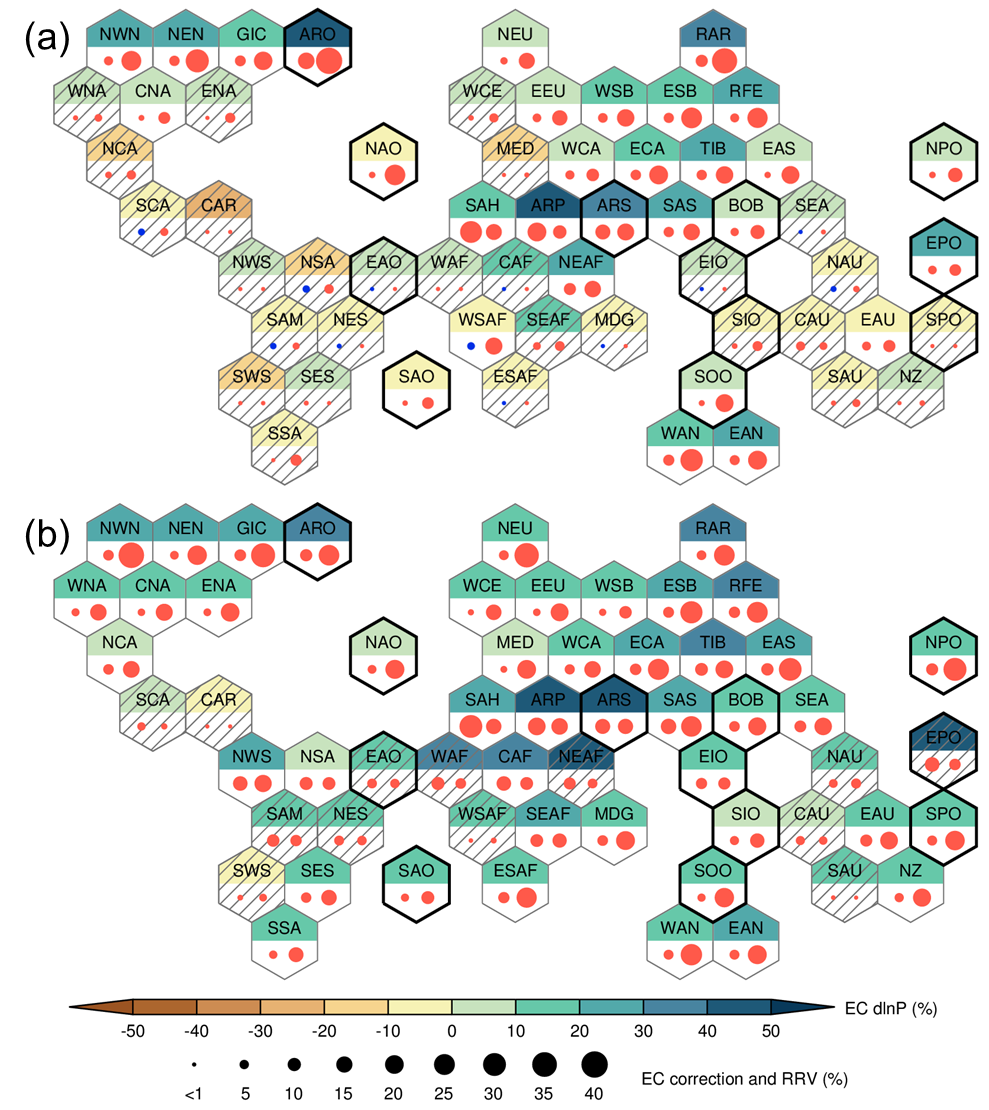Editor: 谢佳 Author: Time: 2024-03-05 Number of visits :329
How the hydrological cycle will change under global warming is one of the central questions in climate studies; however, current climate models show large uncertainties in these projections. Here, we demonstrate that the observational past warming trend can be utilized to effectively constrain future projections in mean and extreme precipitation on both global and regional scales. The physical basis for such constraints relies on the relatively constant climate sensitivity in individual models and the reasonable consistency of regional hydrological sensitivity among the models, which is dominated and regulated by the increases in atmospheric moisture.
By applying the constraint, for the high-emission scenario, by the end of this century, the global average of projected changes in mean precipitation is reduced from 6.9% to 5.2%, while the change in extreme precipitation is reduced from 24.5% to 18.1%. The inter-model variances are reduced by 31.0% and 22.7%, respectively. It should be noted that the constraint can be applied to regional precipitation changes in middle-to-high latitudes, particularly over land. However, the regional corrections are substantially different from the global mean correction (Fig. 1). For example, the projected changes in mean precipitation are reduced from 11.5% to 9.2% over East Asia (ECA), and from 26.6% to 20.6% over South Asia (SAS). Similarly, the projected changes in extreme precipitation are reduced from 29.6% to 20.9% over ECA and from 41.3% to 27.6% over SAS. This study provides regionally constrained hydrological responses over the globe, with direct implications for climate adaptation in specific areas.

Fig. 1. Constrained future (a) mean and (b) extreme precipitation changes in the 58 IPCC AR6 reference regions. Within each hexagon, the filled color of each hexagon denotes the constrained projection, and the left and right dots denote the EC-induced correction and relative reduction of variance (RRV), respectively. The red (blue) dot denotes a positive (negative) value after subtracting the constrained from unconstrained value and the size of the dot is proportional to the absolute value. The hexagons without the diagonal lines indicate that the emergent relationship is statistically significant at the 95% confidence level. The hexagons for ocean regions are highlighted with bold borders.
Panxi Dai, the first author of this paper, is now an Associate Professor at the School of Earth Sciences, Zhejiang University. The corresponding author is Associate Professor Ji Nie from the School of Physics at Peking University. Other collaborators include Assistant Professor Yan Yu from the School of Physics at Peking University and Professor Renguang Wu from the School of Earth Sciences at Zhejiang University. This research was supported by the National Key R&D Program of China grant 2022YFC3003902, the National Natural Science Foundation of China grant 42205002, and the Beijing Natural Science Foundation grant JQ23037.
Article information:
Dai, P., J. Nie, Y. Yu, and R. Wu, 2024: Constraints on regional projections of mean and extreme precipitation under warming. Proceedings of the National Academy of Sciences, 121, e2312400121, https://doi.org/10.1073/pnas.2312400121.
